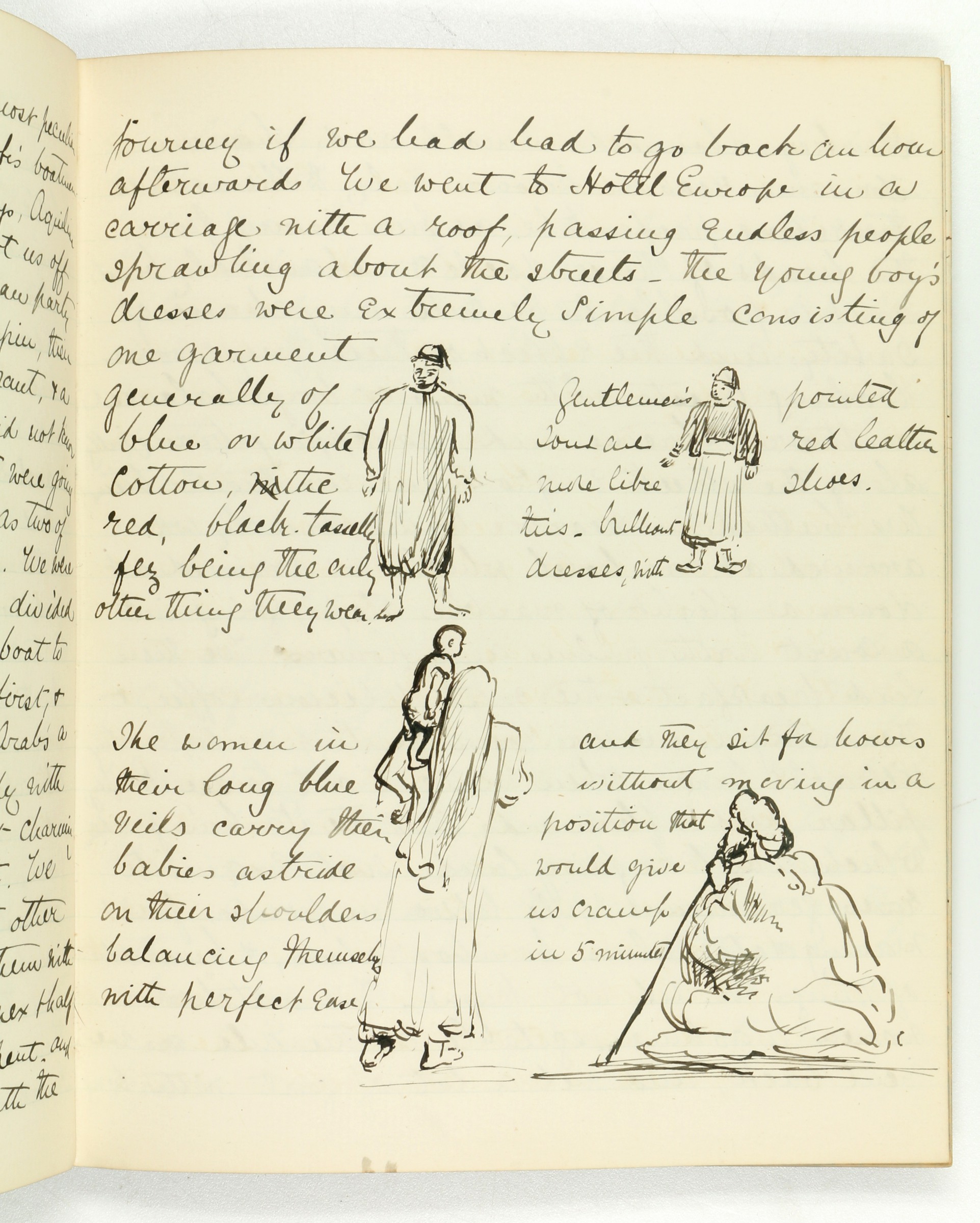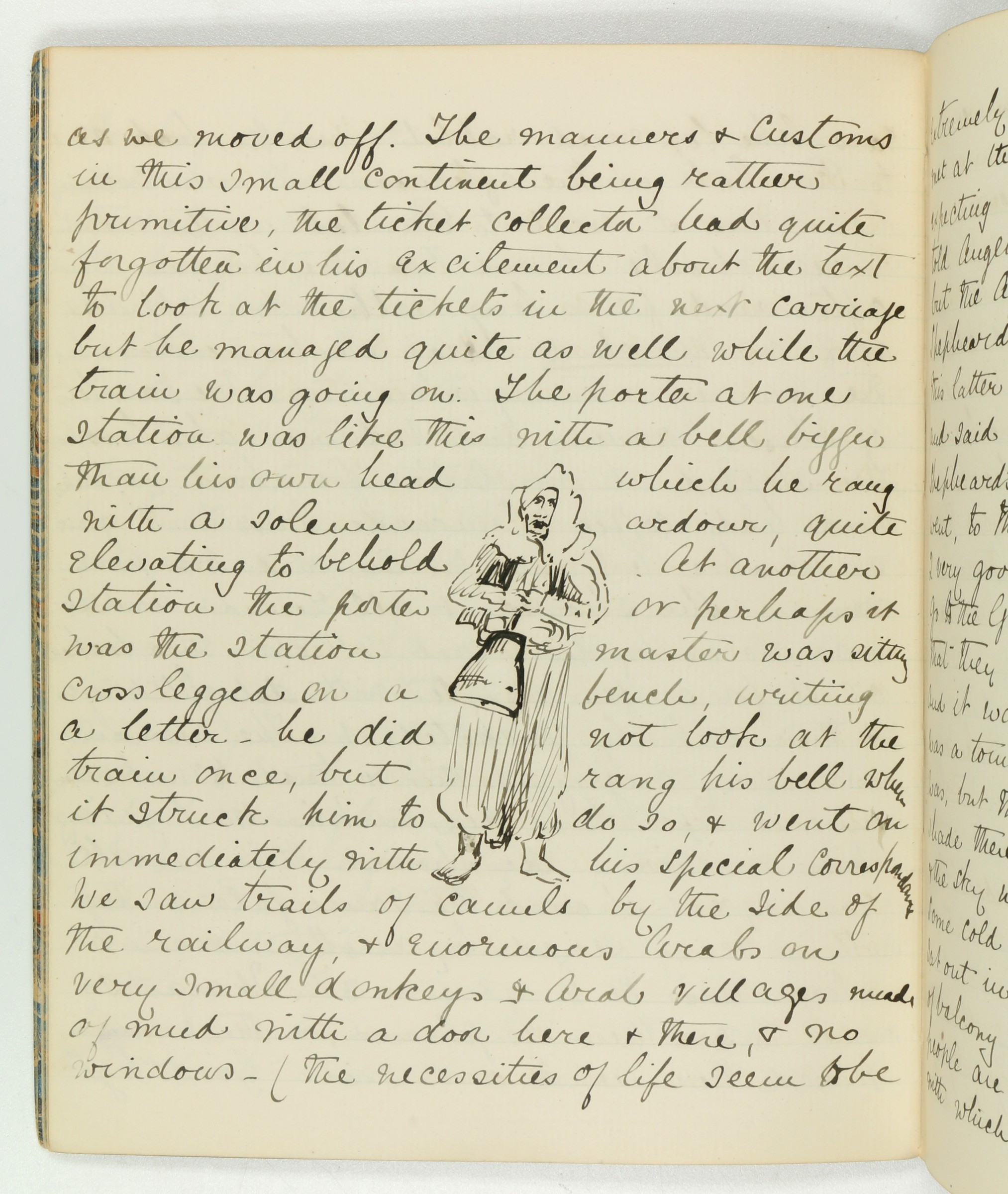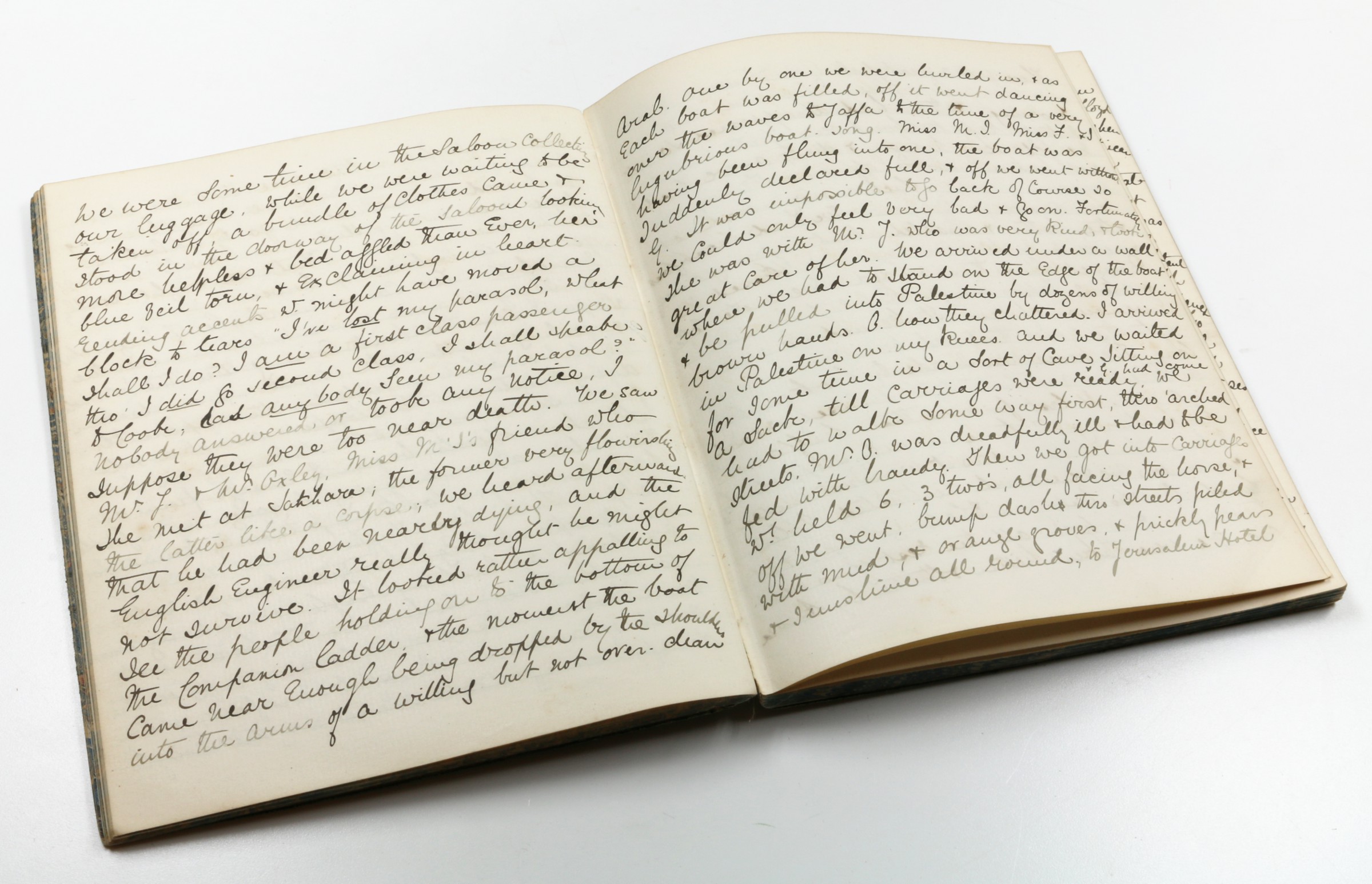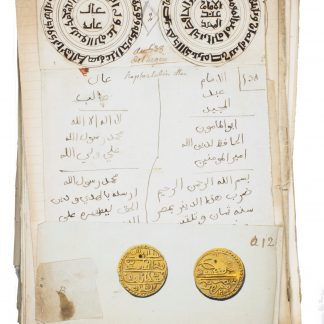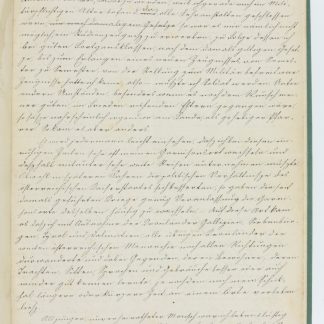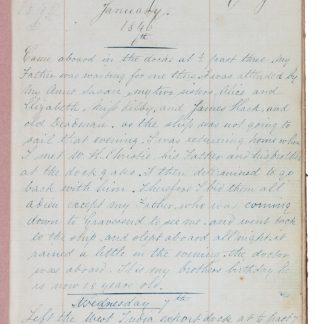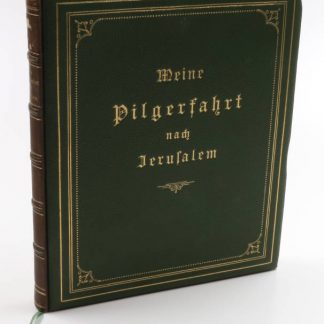[SOLD]
This item has sold. We are always interested in acquiring another copy or any item of comparable quality.
Four Women in the Middle East (To Say Nothing of Thomas Cook): Camels, Harems, Pyramids, and the Beauty of Palestine
Middle Eastern travel journal.
4to (182 x 226 mm). Autograph manuscript (black ink) on paper (watermark "J Allen & Sons Super Fine"). 65 pp. excluding blanks, with 6 pen-and-ink sketches (5 showing Egyptian characters). Original dark green limp morocco with gilt cover fillets, marbled endpapers and edges.
The unusual and lively account of a tour of the Middle East by four unaccompanied young British women, a fair copy transcribed from her own travel diary by Mary Goodwin, a bishop's daughter whose party also included her friends Grace, Miss Fox, and Miss MacInnes. Unlike the pilgrimages to Palestine of earlier centuries, which followed much the same routes, their journey was in fact one of the very first modern "package" tours to the Middle East organized by a commercial operator, Thomas Cook & Son. The foursome set out for the continent from London's Charing Cross station on the morning of 16 February 1880 ("The sea at Folkestone was brown and foamy, and we knew we were in for a good toss"), ferrying across to Calais in the company of Patsy Cornwallis-West. Via Paris they travel by train to Italy, taking in Turin, Bologna and Florence in the style of belated grand tourists. They spend a few days in Rome, where - possibly inspired by their guidebooks or Turner's famous painting, and undeterred by (or oblivious of) Daisy Miller's sad fate just a year earlier - the party visits the Colosseum by moonlight, admiring the newly excavated "dens of the wild beasts and prisons", where one half expects "to hear low growls out of the stillness and to see prowling shadowy figures" (Feb. 23). They embark on the "beautiful boat 'The Saïd'" at Naples on the 28th, sketching Vesuvius from the deck, and arrive at Alexandria on March 3 after a rough voyage: "We got to land [...] & were tugged up a small wall by Arabs a hundred or more of whom were ready with outstretched hands, alll in the most charming dresses [...] The next half hour was the most exciting I ever spent and we felt it would have been well worth the journey if we had had to go back an hour afterwards." Goodwin describes in detail, with deftly drawn ink sketches, the costumes of the local population: "The young boys' dresses were extremely simple consisting of one garment generally of blue or white cotton, the red, black-tasselly fez being the only other thing they wear. Gentlemen's sons are more like this - brilliant dresses, with pointed red leather shoes. The women in their long blue veils carry their babies astride on their shoulders balancing themselves with perfect ease and they sit for hours without moving in a position that would give us cramp in 5 minutes. Donkeys abounded, small and shaven. For some reason known only to themselves the riders prefer to be as far away from the heads of these docile & melancholy beasts as it is possible to be with any chance of safety, and the effect of these grey wooden looking beasts with men or boys balanced on their extreme end, galopping tranquilly along the streets is grotesque in the extreme. We bathed in nearby baths directly we arrived [... After lunch] we went out to see Pompey's pillar and afterwards into the Pasha's garden which was like fairy land, such exquisite waving date palms, bambo[o]s, aloes, & hundreds of things we did not know. We watched women washing vegetables in the Nile [...] Nearly all the women are entirely veiled up to their eyes, the nose veil being connected with the piece over the head by a thing like a brass reel with ridges, the whole thing being called a yak-mash." Goodwin meets the educationist and missionary Mary Louisa Whately (1824-89) at her school in Cairo, watches the dancing and the howling dervishes, and visits Sultan Hassan's Mosque ("We had to put on great big rush slippers over our boots before going in, & it required great ingenuity to keep them on, but the fear of losing our lives if they came off helped us considerably"). On the 8th they climb the pyramids, attended by their colourfully described local guides: "On arriving at the little house built for the Prince of Wales when he came we were surrounded by covetous Arabs claiming Backsheesh - backsheesh, tho' what right they had to our money I never could discover [...] Grace had 3 Arabs, but they only allowed me two, which was mean. I don't think as a rule the steps were more than from 3 to 4 feet each so we got on very well, resting 2 or 3 times [...], and our escorts evidently comparing notes on their different charges. Perhaps it was as well that we didn't understand Arabic. My way was cheered by songs of 'Yankee Doodle' sung in English with a strong Arabic accent, to an Arab tune [...]". The following day, the four ladies go "with Mrs. Shakour (Miss Whately's adopted daughter) to a rather grand harem. It was very interesting & funny. We went into a kind of court with an arched stone roof, out of which opened the men's room. Then we went upstairs, dirty & narrow, to a moderate sized room where we found Miss W's pupil & her mother, both very fat & dressed in red & black check. The room was simply furnished with divans round, & a sort of carved cupboard with a shelf at one end. They immediately brought cigarettes for us to smoke. At least Miss MacInnes & Miss Fox (Grace & I were considered too young I imagine) who smoked away as if they had been brought up to it, & were very proud of their performance. Then a sort of awful marmalade [...] then came immense bowls of sherbert [...]". Travelling onwards by train via Ismailia, they soon reach Port Said. The party departs for Jaffa on the 13th of March, where they cast anchor only after three days of being tossed about in a dreadful storm: "We arrived under a wall where we had to stand on the edge of the boat & be pulled into Palestine by dozens of willing brown hands. O how they chattered. I arrived in Palestine on my knees [...] We were taken hither & thither by [...] Solomon, the most gorgeous specimen of a young Arab Swell, who was dragoman [...] We went to the house of one Simon a tanner, from the roof of which we had the most lovely view [...], on & on till Carmel shows faint & hazy in the distance [...] It is a most picturesque town; sudden streets down steps, all roofed with stone like tunnels, other streets sheltered from the sun with awnings of ragged matting. Crowds of people, donkeys & camels in all the streets, the riders of these latter, such splendid men." The beauty of Palestine is described in glowing terms: "The country was exquisite, the olives with their grey bloom shone like silver in the dew, and the distant hills of Judea all covered with snow, & such lights & shadows [...] At Ramleh we stopped for lunch, in a little queer hotel. It is supposed to be Arimathea, and just above us was a town supposed to have been built by the Saracens, and made into a church long after by the Crusaders [...] The sunset was magnificent, sky seemed made golden transparency, so exquisitely clean & soft [...] We had begun to live the Bible, & felt sometimes as if we had got back to 1800 years ago [...]".
Occasional insignificant browning; binding a little rubbed, with the spine cracked and chipped in places, but still an elegantly bound notebook. Mary Mackenzie Goodwin was the youngest daughter of Harvey Goodwin, the Bishop of Carlisle (1816-96). She proves not only an intrepid woman traveller at the dawn of a new age of tourism, but also a spirited raconteuse, with artistic talent, a quick eye for detail, and touches of wry British humour.

